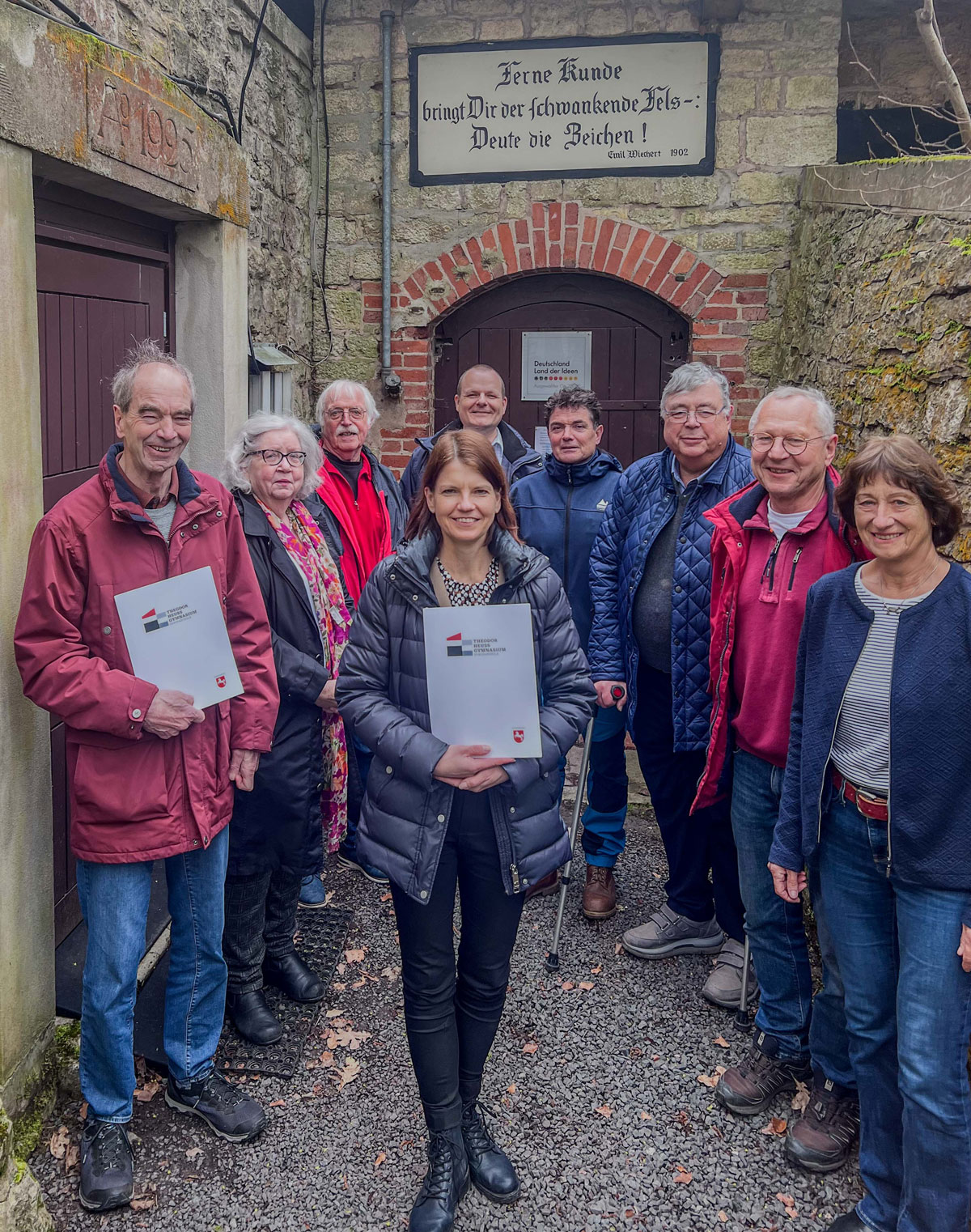Pupils experience earthquake research
Cooperation agreement between Wiechert’sche Erdbebenwarte and Theodor-Heuß-Gymnasium
Wiechert’s earthquake observatory association (earthquake observatory) and Theodor-Heuß-Gymnasium (THG) set as a common goal to promote interest of pupils in the following topics: earthquakes, seismology, seismic, geothermal energy, geomagnetism, solar-terrestrial relationships, telegraphy and history of science. Both sides signed a cooperation agreement on Tuesday, second of April 2024.
This is the first detailed cooperation and sustainably fixed in writing between the earthquake observatory and a Göttingen school. Udo Wedeken, deputy club chairman of the earthquake observatory says: „ With our regularly guided tours we reach for years a large circle of interested parties, especially families with children. Now we will address a younger target group and constantly arouse interest on the mentioned topics. “
As a certified MINT-EC-school – meaning the national excellence-network of schools with secondary level II and an exceptional school profile in mathematics- natural sciences-technology, THG maintains already some collaborations. Headmistress Andrea Riedel says: „This extracurricular regional learning place earthquake observatory allows pupils to gain practical experience and to deepen their knowledge“. Certain subjects, says Andrea Riedel, reaching beyond standard lessons in mathematics and physics could be discussed interdisciplinary, for example within geography lessons. Concerning next school year there are already time windows determined and set for the project. Additionally two specialist works of pupils have already been carried out successfully within the cooperation.
Finally Udo Wedeken on the one hand pointed out the ultra-modern seismic equipment of the earthquake observatory. Achieved measurement data are fed daily into a worldwide network. „But on the other hand we can gain new insights from the measurement data collected and achieved by Emil Wiechert in the beginning of the 20th century. Thanks to today’s evaluation techniques the collected data of the historical seismic instruments, still measuring technically flawless, provide new insights – for example concerning crack formations in the earth’s crust after earthquakes.“



